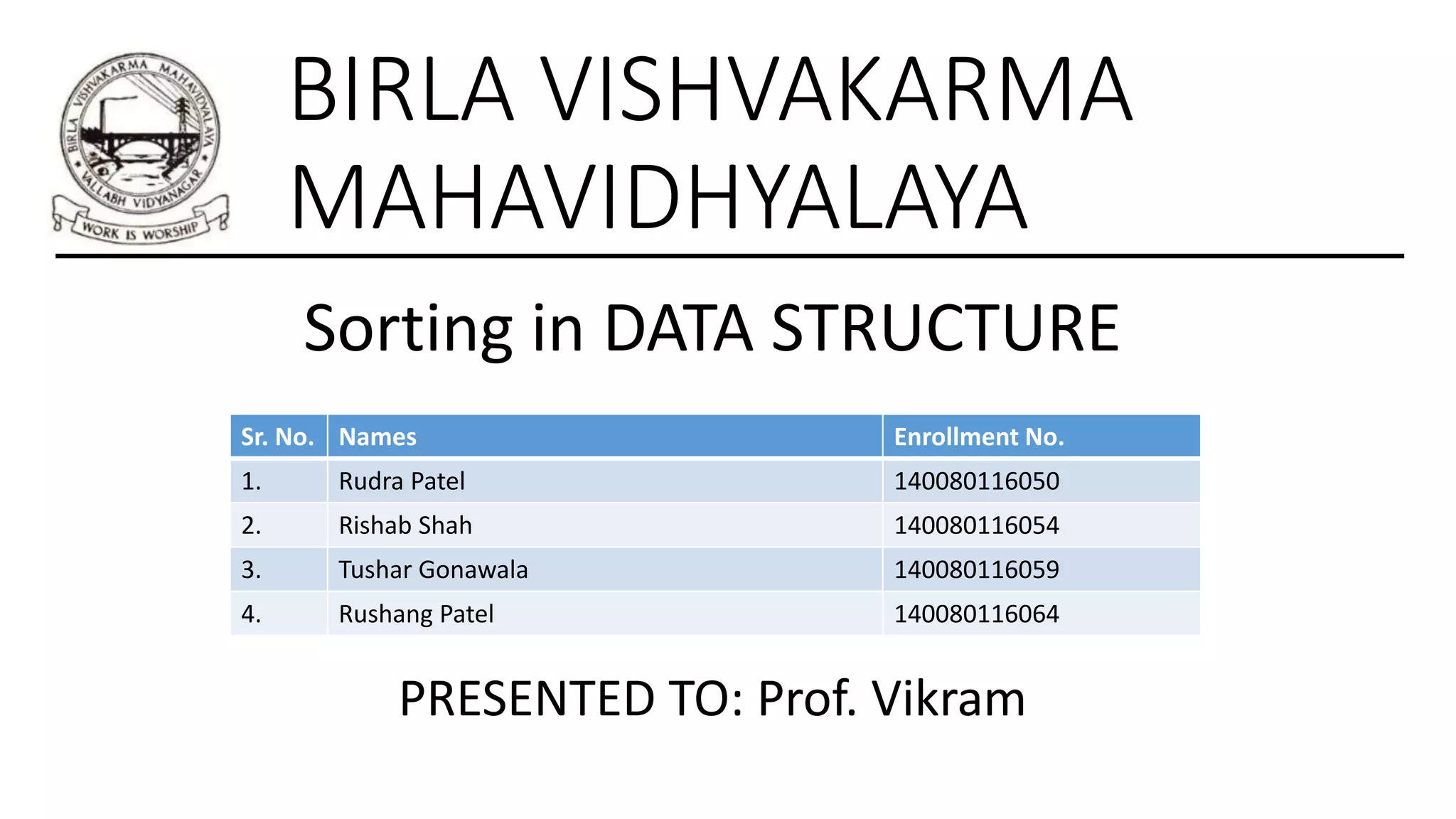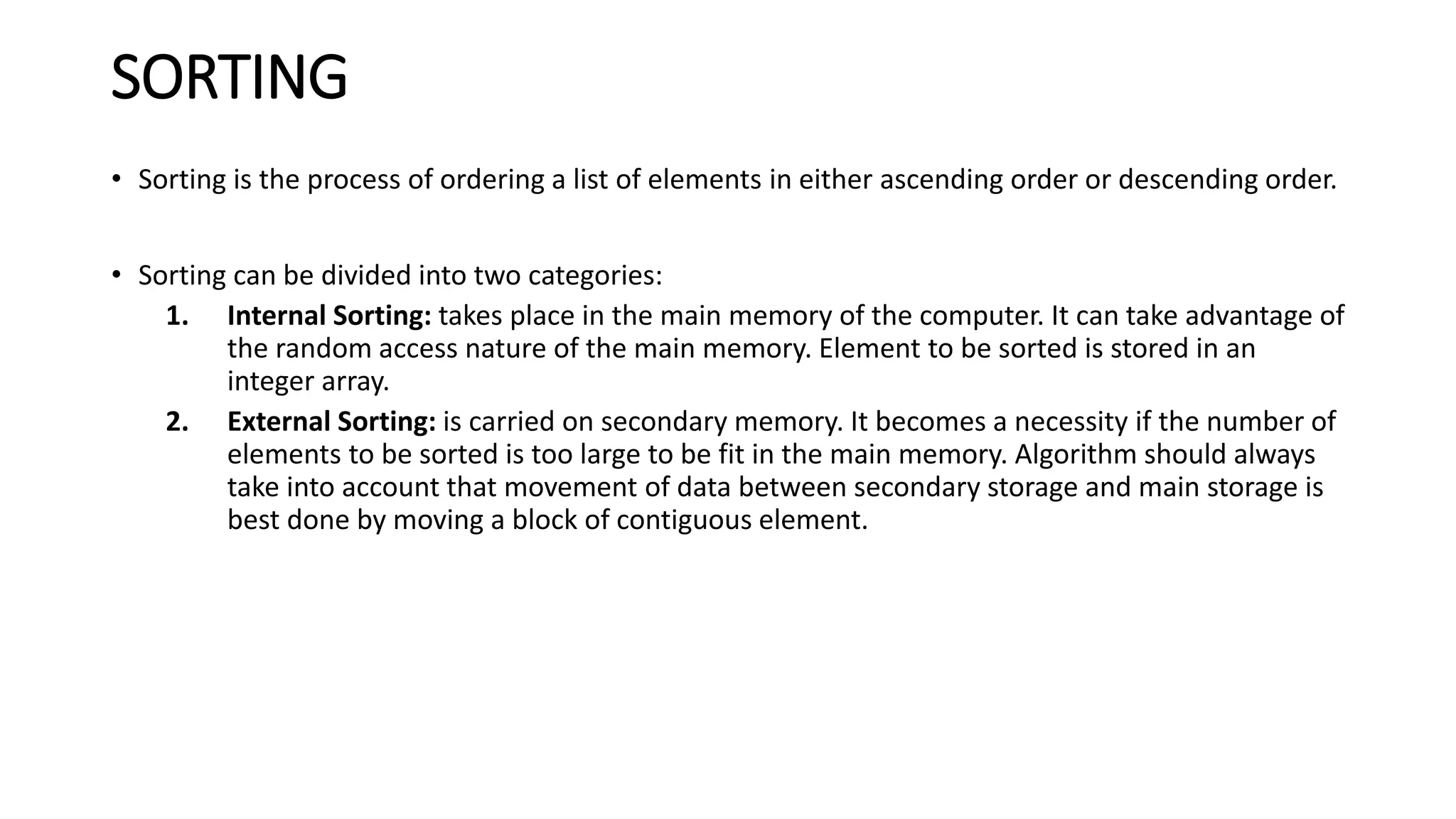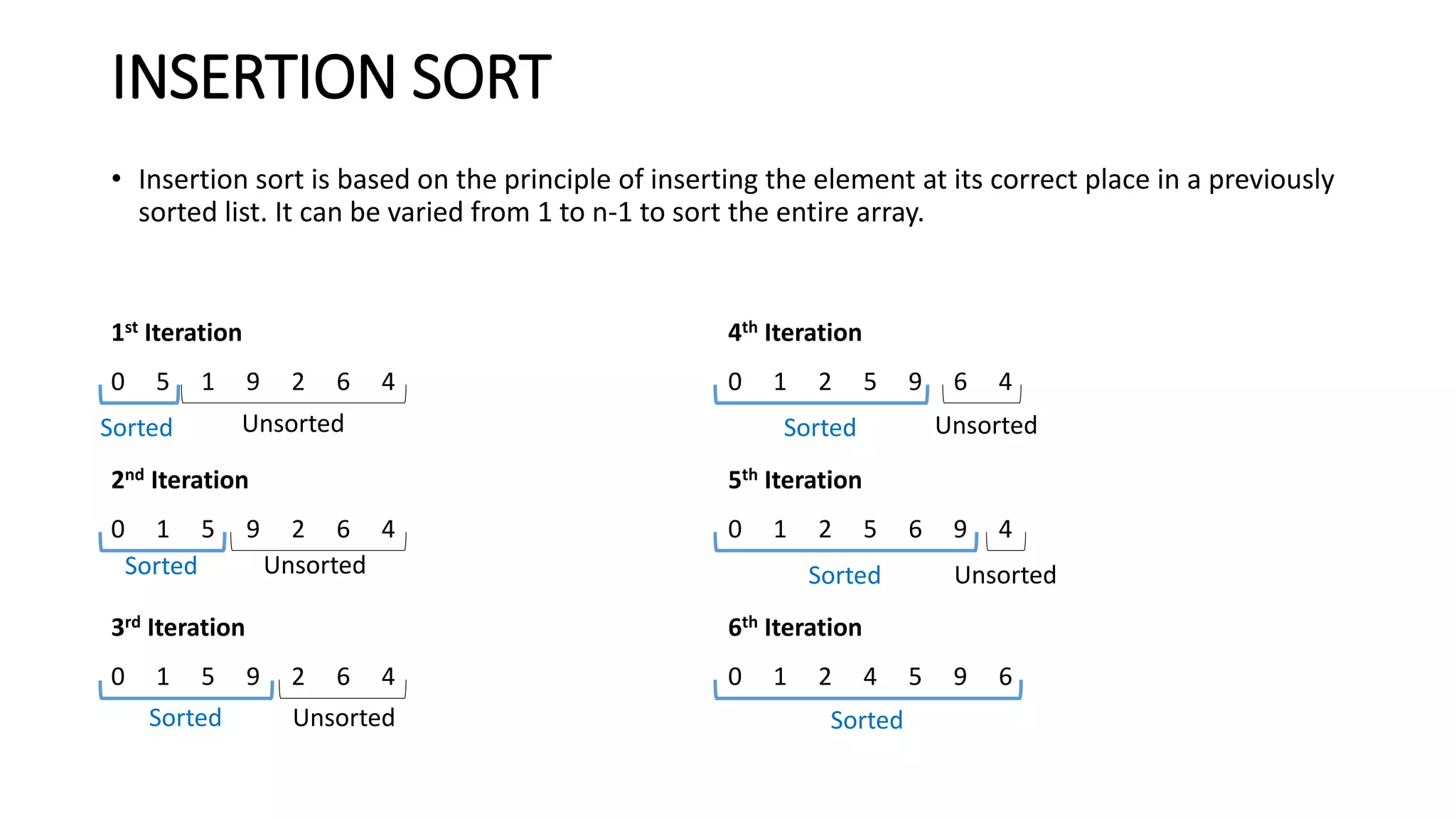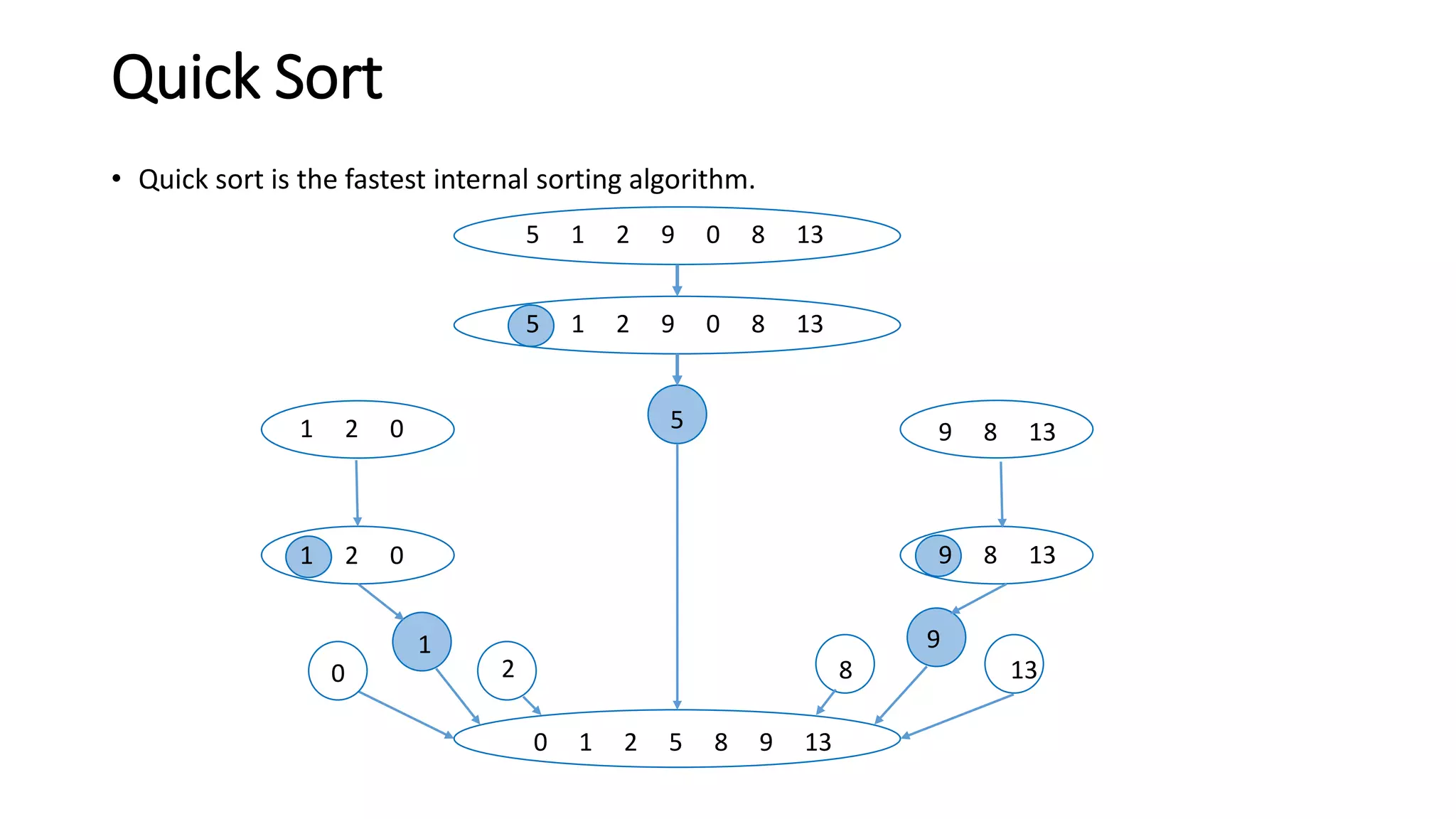This document discusses various sorting algorithms like insertion sort, bubble sort, selection sort and quick sort. It provides pseudocode to implement insertion sort, bubble sort and selection sort. Insertion sort works by inserting elements in the sorted position of a list. Bubble sort works by exchanging adjacent elements to push larger elements to the end. Selection sort finds the minimum element and swaps it with the first unsorted element in each iteration. Quick sort is a highly efficient sorting algorithm that works by selecting a pivot element.



![ALGORITHM
void insertion_sort( int a[ ] , int n)
{
int I, j, temp;
for (i = 1 ; i < n ; i++)
{
temp = a[i];
for (j = i - 1 ; j >= 0 && a[j] > temp ; j--)
a[j + 1] = a[j];
a[j +1] = temp;
}
}](https://image.slidesharecdn.com/dfs-151104011945-lva1-app6892/75/Different-Sorting-tecniques-in-Data-Structure-4-2048.jpg)

![ALGORITHM
void bubble_sort( int a[ ] , int n)
{
int I, j, temp;
for (i = 1 ; i < n ; i++)
for (j = i - 1 ; j <= n - i ; j++)
if(a[j] > a[j + 1])
{
temp = a[i];
a[j + 1] = a[j];
a[j] = temp;
}
}](https://image.slidesharecdn.com/dfs-151104011945-lva1-app6892/75/Different-Sorting-tecniques-in-Data-Structure-6-2048.jpg)
![SELECTION SORT
• Selection sort is a very simple sorting method. In the ith pass, we select the element with the
lowest value amongst a[i], a[i + 1],…,a[n – 1] and we swap it with a[i]. As a result, after i passes
first element will be in sorted order.
5 9 1 11 2 4 Original Array
1 9 5 11 2 4 After First Pass
1 2 5 11 9 4 After Second Pass
1 2 4 11 9 5 After Third Pass
1 2 4 5 9 11 After Fourth Pass
1 2 4 5 9 11 After Fifth Pass](https://image.slidesharecdn.com/dfs-151104011945-lva1-app6892/75/Different-Sorting-tecniques-in-Data-Structure-7-2048.jpg)
![ALGORITHM
void _sort( int a[ ] , int n)
{
int i, j, temp;
for (i = 0 ; i < n - 1 ; i++)
{
k = i;
for (j = i + 1 ; j < n ; j++)
if(a[j] < a[k])
k = j;
if ( k != i )
{
temp = a[i];
a[i] = a[k];
a[k] = temp;
}
}
}](https://image.slidesharecdn.com/dfs-151104011945-lva1-app6892/75/Different-Sorting-tecniques-in-Data-Structure-8-2048.jpg)

![ALGORITHM
void _sort( int a[ ] , int n)
{
int i, j, temp;
for (i = 0 ; i < n - 1 ; i++)
{
k = i;
for (j = i + 1 ; j < n ; j++)
if(a[j] < a[k])
k = j;
if ( k != i )
{
temp = a[i];
a[i] = a[k];
a[k] = temp;
}
}
}](https://image.slidesharecdn.com/dfs-151104011945-lva1-app6892/75/Different-Sorting-tecniques-in-Data-Structure-10-2048.jpg)